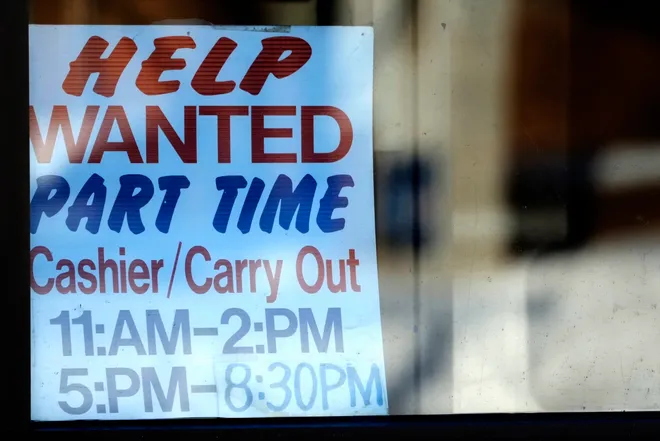Employers advertised fewer job openings in January and the number of people quitting fell as layoffs increased in possible signs the torrid labor market is cooling.
Such a shift could help convince the Federal Reserve to continue to increase interest rates modestly this month, depending on other key reports slated for release over the next week.
Employers posted 10.8 million job openings, down from an upwardly revised 11.2 million in December, the Labor Department said Wednesday in its Job Openings and Labor Turnover Survey, or JOLTS. Openings had broadly eased last fall before surging again in December. They remain below the record 11.9 million advertised in March 2022 but well above the pre-pandemic level of about 7 million.
Since there were 5.7 million unemployed Americans in January, the 10.8 million vacancies amounted to 1.9 available jobs for each unemployed person, close to a record dating back two decades.
While job openings are “heading in the right direction…the decline is far too modest to convince (the Fed) that labor market conditions are cooling enough to bring down inflation,” economist Matthew Martin of Oxford Economics wrote in a note to clients.
Openings declined by 240,000 in construction; nearly 200,000 in leisure and hospitality, nearly all in restaurants, bars and hotels; 151,000 in financial activities, including finance and insurance, and real estate; and 94,000 in retail.
Job openings increased by 95,000 in professional and business services and 94,000 in transportation, warehousing and utilities.
Layoffs, meanwhile, increased by 241,000, or 16%, to 1.7 million. Historically, that’s an average figure but it’s the most in more than two years and raises questions about whether the U.S. is heading toward a recession this year, as many economists predict.
Initial jobless claims, another gauge of layoffs, have remained low but that may not capture the full picture if workers receiving severance packages haven’t yet filed for unemployment insurance.
Are resignations on the rise?
The number of employees quitting jobs fell to 3.9 million from 4.1 million the prior month, a historically elevated figure but the lowest level since May 2021. That means 2.5% of workers voluntarily left their jobs, typically to take higher-paying positions, down from 2.6%.
The total number of hires rose to 6.4 million from 6.3 million the previous month, though that comes as little surprise.
Labor already has announced that employers added a blockbuster 517,000 jobs in January. Still, Fed officials are closely monitoring the JOLTS report, especially openings, to gauge whether employer demand for workers is easing, a development that could mean more modest job gains in the month ahead. The dip in January is encouraging but openings pulled back last year only to rebound.
A drop in quits similarly would signal a less robust labor market in which employees are switching jobs and demanding raises less frequently.
Why does the Fed want to slow job growth?
Fed officials are seeking such a slowing in the labor market to provide evidence that inflation is poised to ease. Strong job growth typically means faster pay increases as businesses compete for a limited pool of workers, costs that companies tend to pass along to consumers through higher prices.
Job growth, consumer spending and inflation were all gradually pulling back last year before unexpectedly surging in January. That prompted Fed Chair Jerome Powell to tell a Senate committee Tuesday that officials will likely raise a key interest rate higher than anticipated and could resume larger hikes as soon as this month after ratcheting down the pace since late last year.

